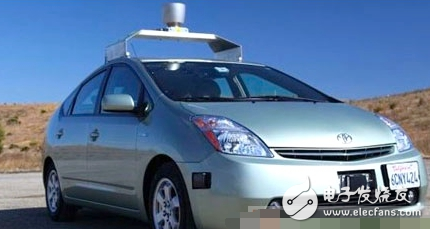In the world of autonomous vehicles, Google's research and development stand out as some of the most advanced and comprehensive. Creating a fully self-driving car on city roads is an incredibly complex task. Unlike many other projects that are limited to controlled environments or special road conditions, Google’s self-driving car, known as the Google Car, has demonstrated real-world practicality. Today, we’ll take a closer look at how the Google Car works and explore its capabilities in detail.
**Google Car: Not Just a Car**
Although it’s called a car, the Google Car is more than just a vehicle—it’s essentially a robot. The research behind it is primarily focused on robotics rather than traditional automotive engineering. While the basic structure of the car is similar to a regular vehicle, including transmission and fuel systems, the key difference lies in its ability to perceive and respond to the environment intelligently. This "intelligence" is what sets it apart from conventional cars. In essence, the Google Car is an intelligent machine capable of navigating to your destination without human intervention.
**The Eyes and Brain of Google Car**
To function as a smart robot, the Google Car relies on a combination of sensors and powerful computing systems:
**Velodyne 64-beam Laser**
One of the most critical and expensive components of the Google Car is the HDL-64E 64-line laser from Velodyne Lidar. It rotates and emits 64 laser beams up to 120 meters, capturing real-time 3D maps of the surroundings. With over 1.3 million data points per second, this sensor allows the car to detect objects, their size, shape, and movement patterns. The image below shows what the car sees through this sensor:

This raw data is then combined with Google Maps information to create a detailed environmental model, helping the car make accurate decisions.
**GPS and Cameras**
While the laser provides spatial awareness, GPS and cameras add another layer of precision. Two forward-facing cameras mimic human binocular vision, helping the car estimate distance and speed. Wheel sensors and GPS further refine the positioning system, ensuring the car stays on track even in complex urban settings.
**Radar Systems**
To complement the laser and camera data, Google Car is equipped with front and rear radar units. These help measure the relative speed of nearby vehicles, allowing the car to react quickly and safely in dynamic situations.
**Processing Power**
All the data collected by these sensors is sent to a powerful central processor located in the rear of the car. This processor handles up to 1GB of data per second, creating a detailed map of the environment. Objects are color-coded—green for obstacles, pink for non-interfering items, and so on. The AI then uses this information to make real-time driving decisions.
**Intelligent Decision-Making**
Google Car’s AI is highly sophisticated. It can handle unexpected situations, such as yielding to pedestrians when the light turns green, or following traffic rules at uncontrolled intersections. If other vehicles don’t respond appropriately, the Google Car will adjust its approach to ensure safety.
**Conclusion**
With advanced sensors, robust processing, and intelligent decision-making, Google Car represents a major step toward the future of autonomous driving. In 2012, Nevada became the first U.S. state to issue a license plate for a self-driving car, marking a significant milestone. Although current regulations require a human to monitor the car, this is likely a temporary measure as the technology matures.
We believe that the day is not far off when AI-driven cars will outperform human drivers in terms of safety, reliability, and efficiency. The future of transportation is here, and Google is leading the way.
phone Charging cable,Usb Phone Data Cable Android,iphone charge data cable,Phone data cable adapter
DongGuan BoFan Technology Co.,Ltd. , https://www.ufriendcc.com